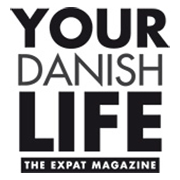NEW: Regionalisation of travel restrictions as of 1 December 2020

The by now (in)famous travel restrictions from the Danish Foreign Office will be able to distinguish between regions in a country rather than only looking at the entire country. New eased isolation regulations will be implemented at the same time.
The article continues below.
By Bente D. Knudsen
A much waited for change in the way the Danish Foreign Office looks at the pandemic development in the EU, Schengen and the United Kingdom will ease travel greatly once the level of infections start going down again.
The Foreign Ministry stressed that the new model will only make it easier once the levels of infection per 100,000 go down, as the level to define that a region is low risk will remain at less than 30 infections per 100,000, which at present is also valid when looking at an entire country.
The regionalisation possiblity means that countries, which otherwise are orange in the Foreign Office model, may have regions that are yellow and thus these regions will be opened for travel.
The same goes the other way around, an otherwise yellow country may have regions which become orange and thus subject to restrictions rather than the whole country.
There is no doubt that the regionalisation will demand more detailed analysis by travellers as to which regions are open and which are closed in any given country they visit, as will border controls for entry to Denmark from these regions as well.
This will mean that if for instance friends and family come from a region which is low risk (yellow), even if they come from an orange country, they should be able to visit Denmark.
At present only friends and family from a high risk country are able to enter if they qualify to do so due to one of the exemption rules and then only with a negative COVID-19 test.
The article continues below.
The Danish Foreign Minister, Jeppe Kofoed, says in the press release announcing the new measures that
“I must at the same time underline that the rate of infection in Europe is still at a very worrying high level and there will not be any regions in the EU,Schengen and the UK which at present will open. The infection rates are high and there is a lack of data from a range of countries at present. The idea of the model is to ensure that the travel model is ready for the future (ed. when infection rates start going down again).”
The data is collected from the EU, Schengen and the UK and published by the European Centre of Disease Control, ECDC.
The definition of a high-risk region will be the same as the one used for entry into Denmark.
The definition follows the EU guidelines from October which Denmark has implemented. A high-risk region is defined as having a rate of infection at 75 per 100,000 on a seven-day basis.
If in an otherwise open country (yellow in the Danish Foreign Office colour guide) there is a region which is classified as a high risk region than all travel to that region will be disadvised ( ikke nødvendige rejser).
“With the new data from ECDC, we will be able to make much more detailed travel guidelines than those we have at present. This makes it possible for us to keep regions open, under the condition that the country supplies the necessary health and test data. At the same time, we will be able to shut down regions with higher infection rates.
The most important is still the health, safety, and security of Danes. The epidemic is still raging globally and in Europe and the travel guidelines reflect that situation,” Jeppe Kofoed says about the situation and new model.
The article continues below.
New self-isolation guidelines:
For residents in Denmark who have travelled to an orange or high-risk country or region, the current recommendation is to self-isolate for 14 days upon return.
Take note that all public employees at present must self-isolate at their own cost upon return if they travel to an orange country and this is also valid for a range of Danish business employees, so even if only a recommendation, it can be read as a clear requirement. If it were mandatory it would require police surveillance and legislation passed in the Danish Parliament.
This self-isolation recommendation will be amended as of 1 December 2020 to 10 days.
The amendment is based on advice by the Danish Health Authorities and correspond to the amount of isolation days required in for instance Germany the Danish Foreign Office informs.
NEW is that the isolation can be broken by travellers to an orange or high-risk country or region if they take a COVID-19 test four days after their return to Denmark.
If the test result is negative, they can end their isolation. Thus, the isolation period can drop to five days (in Denmark the current answers of coronavirus tests are mostly available within 24 hours).
Support our magazine with a contribution of any size
We do not want to put up a pay-wall, so we need your support and if you find our content relevant and worthwhile, we would value any contribution, however big or small, as a token of your appreciation of our efforts.
How to support:
Transfer any contribution to our bank account at: Your Danish Life/ Danish Expat Media Aps
Danske Bank Account number: 3409 11405673
IBAN: DK68 3000 0011 4056 73
or MobilePay to 2144 1224
Message: Support

